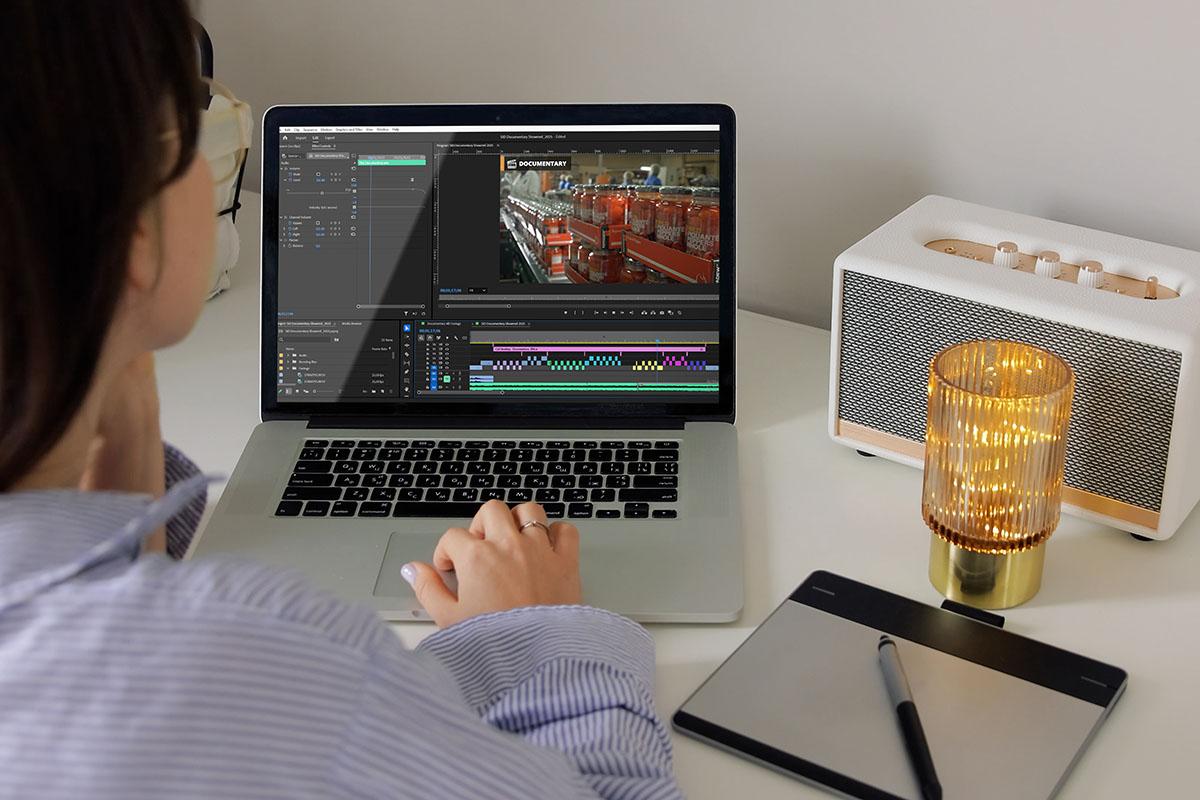
7 Editing Techniques a Video Productions Company Uses to Hide Cuts
There is an art to editing that goes far beyond placing one clip after another. Some transitions are so seamless that viewers never even realise they are watching a series of separate shots. When done well, these subtle edits keep the focus on the message rather than the mechanics of the production. The result feels effortless, yet the techniques behind it require precision, planning, and experience. For those commissioning professional content, understanding the thinking behind these edits provides valuable insight into how a video productions company achieves fluidity and cohesion. From corporate training films to animated explainers, there are methods that can disguise cuts, maintain momentum, and create a sense of uninterrupted flow. These are not just stylistic choices; they are decisions that can shape how an audience engages with information, responds to a story, and retains what they have seen. Let’s take a look at some of the most effective professional techniques for creating seamless transitions across a wide range of video formats.
1. Invisible Cuts and Natural Wipes
An invisible cut is designed to blend two separate shots so convincingly that the viewer perceives them as one. This is often achieved by aligning movement, shapes, or lighting between the shots.
In interviews, for example, a subject might walk past the camera or turn their head at just the right moment, hiding the edit in the movement. In event coverage or documentary work, the same idea can be applied when filming through a doorway, following an object, or using a passing crowd to create a visual bridge.
The effectiveness of this technique lies in its subtlety. A professional editor plans these moments during filming or identifies opportunities during post-production. In the hands of a skilled video productions company, this approach keeps the rhythm of the piece intact while making transitions nearly imperceptible.
2. Cutting on Action, Whip Pans and Push-Ins
Cutting on action means making the edit during a movement rather than in moments of stillness. This could be someone picking up a folder, turning a page, or taking a step. The action distracts the eye and makes the cut feel natural.
Whip pans work in a similar way, using a fast camera movement to introduce motion blur, allowing the transition to occur during that blur. Push-ins, where the frame tightens slightly, can be used to conceal small edits in a single take, especially in spoken content.
Marketing videos, training films, and interviews all benefit from these methods. They maintain visual continuity and prevent the viewer from becoming distracted by noticeable jumps. A video productions company will often combine these with carefully staged camera work to ensure the edit feels intentional and fluid.
3. Split Edits and Sound Bridges
A split edit involves offsetting the timing of audio and video so that one leads the other. There are two common variations: the J-cut, where the audio from the next shot starts before the visual change, and the L-cut, where the audio continues after the visual has moved on.
Sound bridges are closely related, using continuous audio to carry the viewer across different visuals. In corporate training videos, narration can be layered to prepare the audience for the next visual, while in documentary production, natural sound from one location might lead into the next scene.
These approaches are as much about guiding perception as they are about masking cuts. When handled by a professional video productions company, the audio becomes the connective tissue that ties the visual journey together.
4. Reframing and Morph Cuts
Reframing, sometimes referred to as a punch-in, is a subtle zoom into the image to simulate a change in camera angle. This is particularly effective in single-camera setups, creating visual variation without breaking continuity.
Morph cuts take this further, digitally blending two similar frames to smooth over changes in expression, posture, or minor camera movement. The result is a shot that appears unbroken, even if it contains material from multiple takes.
These techniques are widely used in talking-head interviews, explainer videos, and other formats where a consistent visual presence is important. A video productions company applies them to maintain viewer focus while delivering information in a natural, uninterrupted flow.
5. Match Cuts and Thematic Continuity
A match cut links two shots through a shared visual or conceptual element. This could be matching shapes, movements, colours, or themes. For example, a spinning object in one scene could cut to a similar movement in a completely different context.
In documentary filmmaking, match cuts can link different times or locations, reinforcing narrative connections. In animation and motion graphics, they can be used to transition between ideas while maintaining a consistent visual style.
When done well, match cuts create an almost subconscious connection between scenes. They are an example of how a video productions company can enhance the storytelling potential of even the most straightforward corporate or educational project.
6. Fades, Dissolves and Creative Wipes
Fades and dissolves are among the most traditional transitions, signalling a shift in time, tone, or scene. A fade-out can indicate closure, while a dissolve can soften the change between related visuals.
Creative wipes, where one image is replaced by another through a moving line or shape, can add personality when appropriate. However, these techniques are most effective when used sparingly, as overuse can make them noticeable.
In training videos, dissolves might mark the progression between modules. In promotional content, a subtle fade could accompany a shift from product demonstration to client testimonial. The considered use of these transitions by a video productions company ensures they support the message rather than distract from it.
7. The 30-Degree Rule and Continuity Editing
The 30-degree rule advises that when cutting between two shots of the same subject, the camera angle should change by at least 30 degrees. This avoids what is known as a jump cut, where the subject appears to suddenly shift position without reason.
Continuity editing extends this principle, ensuring that elements such as eyelines, screen direction, and lighting remain consistent between shots. These practices are essential across all video types, from corporate presentations to animated sequences.
Adhering to these principles helps a video productions company maintain a seamless visual logic that keeps the audience focused on the message, not the mechanics of the edit.
Why Seamless Edits Matter
Smooth transitions are not simply aesthetic preferences; they directly affect how a viewer experiences and understands content. Invisible cuts, match cuts, split edits, and other techniques all contribute to an uninterrupted narrative flow that keeps the audience engaged.
For those commissioning professional content, being aware of these methods provides a better understanding of the level of planning and expertise involved in producing high-quality video. The ability to move through information without distraction is a sign that a video productions company has considered every frame, every sound, and every transition in service of the viewer’s experience.
When every cut and transition works in harmony, the audience experiences the content exactly as intended. Sound Idea Digital applies professional editing techniques across all formats to maintain this flow. Get in touch to see how we can do the same for your project.
We are a full-service Web Development and Content Production Agency in Gauteng specialising in Video Production, Animation, eLearning Content Development, Learning Management Systems, and Content Production.
Contact us for a quote. | enquiries@soundidea.co.za | https://www.soundideavideoproduction.co.za| +27 82 491 5824 |
For Those Interested in the Details Behind the Edit
Even the most seamless transitions rely on a combination of techniques, planning, and creative decisions that extend far beyond the cut itself. If you would like to understand more about the elements that contribute to professional video flow, the following articles explore related aspects of production, from the role of editing, to planning purposeful B-roll, to camera movements that work best with specialised equipment. These pieces will give you a broader view of how different techniques work together to create the final result.
Video Production Companies Johannesburg: Why Video Editing is Important
Video Production Johannesburg Insights: 5 Camera Moves Best Captured with a Gimbal
10 Types of B-roll Every Video Production Firm Should Plan For

